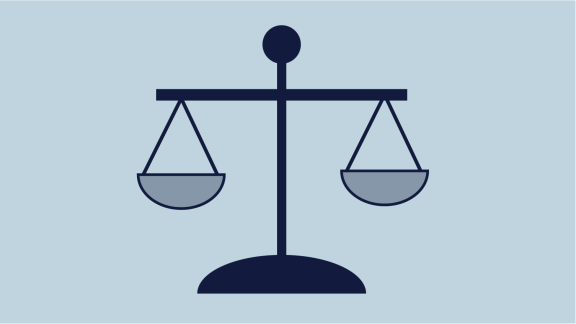Is the NHS too woke?

Overview
Can a national health service, with an extremely large and inclusive workforce that is responsible for supporting the healthcare needs of every person in this country - regardless of their age, gender, sexual orientation, race, disability, religious beliefs or any other characteristic - ever be too woke?

Being ‘woke’ is defined as being ‘alert to and concerned about social injustice and discrimination’.
Critics would argue that a threshold has been passed, while others would go on to say that ‘inclusion activities’ actually run the risk of alienating others and the NHS is there to serve, not preach.
It’s a complicated and evolving subject and is why the NHS employs skilled leaders including experts in equality, diversity and inclusion (EDI) to support delivery of healthcare to all.
While the NHS is not alone in hiring specialists that tackle inequality, former health secretary Steve Barclay lasered-in on the sector in instructing integrated care boards to cease recruitment of such dedicated roles and asserted that “subscriptions to external organisations on DE&I issues” did not, in his view, “represent value for money”. This has pointed to a wider lack of understanding of the value of EDI.
This piece explores the value of the NHS investing in EDI.
Exploring the evidence
The NHS’s central purpose has always been to provide healthcare for everyone who needs it, free at the point of delivery. This therefore includes being awake to and tackling the inequalities that patients can encounter in accessing services, experiencing services and receiving poorer outcomes.
The NHS is the most diverse employer in the country – both in terms of the variety of professions and the makeup of the 1.5 million people in these roles – and has additional legal obligations to meet under the Equality Act 2010 and the Health and Care Act 2022.
This is why the NHS employs small teams of experts who are responsible for setting the tone, culture, policies, frameworks, training and legal compliance that promote fair treatment and the full participation of everyone who interacts with its services.
A recent Freedom of Information response showed the 241 NHS organisations which responded to the request employed 882 staff in diversity-related roles between them – this averages three roles per organisation and it is understood that EDI roles represent less than 1 per cent of the NHS workforce as a whole.
And when looking at investment in EDI, it represents a small proportion of the annual NHS budget – estimated to be 0.03 per cent (this is around £40 million out of a £168 billion budget).
Why is EDI needed?
While health leaders know that EDI contributes to increased productivity, efficiency, patient safety and quality improvement, the evidence on why a focus on EDI is needed is clear.
Examples of why EDI is needed:
- Although recognition and understanding, for example by the ambulance service, of the long-standing misogyny and harassment that women have faced in many NHS workplaces and teams is increasing, it must be met with a robust plan to tackle this disparity.
- A 2018 report estimated the annual cost of bullying, harassment and discrimination at £2.281 billion, which exceeds some 2020/21 NHS service costs such as high-cost drugs at £2.013 billion or chemotherapy at £2.051 billion.
- It is recognised that many groups defined as having ‘protected characteristics’ in law, such as people with disabilities, children and older people, can suffer poorer experiences, often have disproportionately worse health outcomes, and need specific support in accessing care.
- The NHS Workforce Race Equality Standard shows that black and minority ethnic people working in the NHS have a poorer experience than their white counterparts.
- A survey by Stonewall found 23 per cent of LGBTQ+ people ‘witnessed discriminatory or negative remarks against LGBTQ+ people by healthcare staff’ and one in seven LGBT staff avoided treatment for fear of discrimination.
- The NHS Long Term Workforce Plan includes a commitment to ensure 130,000 fewer staff leave the NHS over the next 15 years including by improving culture, leadership and wellbeing.
Exploring the impact
Distinct EDI roles are relatively new but they are already demonstrating impact. Specialist EDI roles contribute to supporting and retaining staff and to improving care to patients. Examples of what they can steer or be involved in include:
recruitment, retention and staff onboarding exercises
engagement with patients, ensuring people using services receive the care they require
engaging with local communities to help design local services especially for and with those with complex needs
advising on in-service signage and patient communications helping to ensure solutions are in place based on the feedback of staff and patient surveys.
EDI specialists also play a key role within teams that enable people using services to codesign and access services.
Examples of EDI in action include:
- United Lincolnshire Hospitals NHS Trust introduced weekly in-house menopause clinics, as part of its focus on improving its retention rates recognising that more than a third of its workforce were female and aged over 45.
- By focusing on the attendance of older adults to A&E in Mid and South Essex, an urgent community response team was introduced which was able to provide alternative options to going to hospital. Results showed a 35 per cent increase in referrals to this service via 111 and 999, decreasing demand elsewhere in the system, with an average of 2.7 acute beds saved every day.
- Cheshire and Merseyside ICS are using AI to successfully tackle waiting lists across nine NHS trusts. The technology enables identification and prioritisation of high-risk patients on waiting lists and suggests specific actions for clinicians to take, tackling health inequalities as the source. Identifying patients more likely to experience lower outcomes, clinicians have been able to support them with pre-habilitation, improving pre-surgery physical health resulting in improved surgery outcomes, fewer A&E admissions and shorter hospital stays.
- The University Hospitals of Leicester NHS Trust, used the Meaningful Activities Service over a 12-month period to support ‘730 patients with cognitive impairment’ during their hospital stay. This identified patients more likely to suffer falls, be unable to nourish themselves without support or become distressed during their stay. By having these needs addressed, one of the recorded outcome from this service was an increase in the ‘flow of discharge’.
The bottom line
If the NHS is to fulfil its duties to patients and its wider local communities, alongside being an employer of choice, the role of EDI professionals' tackling inequality is central to consideration of everyone’s needs.
The NHS faces numerous challenges with increasing demand for services, waiting lists, societal changes, and the need to grow and retain more of its workforce. Tackling such issues requires a relentless focus ensuring no one is left behind, a key principle underpinning the role of equality, diversity and inclusion leads.
NHS leaders know that EDI is a key strategic function that contributes to increased productivity, efficiency, patient safety and quality improvement. Not only does EDI support the NHS to meet its various legal obligations but it also facilitates the NHS to improve access, experience and outcomes to its services.
Such vital activity represents a small proportion of the annual NHS budget and of its workforce. The cost implications of not investing in EDI roles and activity would be much higher.
Read more from our series of explainers, providing facts and figures to challenge common misconceptions in health and care.



